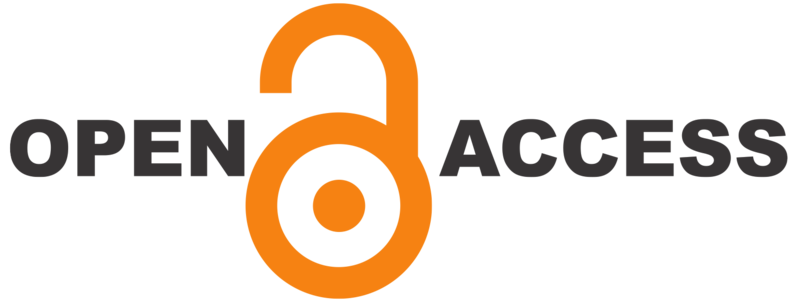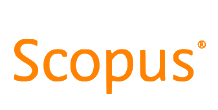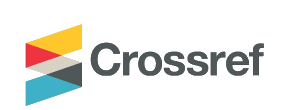The development of a tailored, career-focused interactive online learning tool for physical activity and health students: A pilot study
DOI:
https://doi.org/10.21153/jtlge2017vol8no1art596Keywords:
careers, e-learning, higher education, career planning, online learning toolsAbstract
Students enrolled in university courses often lack knowledge of potential jobs and career paths they can take, which can inhibit their ability to plan, job seek and make decisions about their careers, and negatively impact on their ability to gain employment. To address this problem we developed and piloted a tailored, career-focused interactive online learning tool for public health and exercise science students, based on constructs of Savickas’ (2005) theory of career construction. This paper reports a mixed-methods study to understand student experiences of using that tool, and their perception of how well it prepared them for career planning. Twenty-two second-year students completed an online survey using both qualitative and quantitative methods to assess the perceived feasibility and acceptability of the interactive online learning tool. Descriptive (for quantitative data) and inductive content analyses (for qualitative data) were performed. Most students (86%) indicated that they would use the tool again. All students reported that the tool was user-friendly, engaging and informative and provided them with jobs that matched their personal and work-related skills and strengths. Qualitative data reflected these findings and identified seven key themes, including: value, career exploration, design, and tailoring, with themes partly reflecting components of Savicka’s theory. The tailored, career-focused interactive online learning tool was perceived to be a feasible and effective strategy to support university students in their career planning and job seeking behaviours prior to graduation. These findings can be used to inform and refine the development of career-focussed tools for students undertaking other University courses.
Metrics
References
Bennett, D., Richardson, S., & MacKinnon, P. (2016). Enacting strategies for graduate employability: How universities can best support students to develop generic skills. Part A. Retrieved from Canberra, ACT:: http://www.olt.gov.au/project-how-universities-can-best-support-students-develop-generic-skills-enacting-strategies-gradua
Biggs, J. B., & Tang, C. (2011). Teaching for quality learning at university. Milton Keynes: Open University Press.
Booth, M. L., Bauman, A., Owen, N., & Gore, C. J. (1997). Physical activity preferences, preferred sources of assistance, and perceived barriers to increased activity among physically inactive Australians. Preventive Medicine, 26(1), 131–137. http://dx.doi.org/10.1006/pmed.1996.9982
Boswell, W. R., Zimmerman, R. D., & Swider, B. W. (2012). Employee jjob search: Toward an understanding of search context and search objectives. Journal of Management, 38(1), 129–163. http://dx.doi.org/10.1177/0149206311421829
Bridgstock, R. (2009). The graduate attributes we’ve overlooked: enhancing graduate employability through career management skills. Higher Education Research & Development, 28(1), 31–44. http://dx.doi.org/10.1080/07294360802444347
Bridgstock, R., & Hearn, G. (2012). A conceptual model of capability learning for the twenty-first-century knowledge economy. Cheltenham: Edward Elgar.
Bridgstock, R., Thomas, A., Lyons, K., Carr, L., & Zelenko, O. (2012). Putting the cart before the horse? Driving student engagement through first year career identity development in a large multidisciplinary creative industries cohort. In First Year in Higher Education Conference 2012, 26-29 June, Brisbane.
Brown, D. J., Cober, R. T., Kane, K., Levy, P. E., & Shalhoop, J. (2006). Proactive personality and the successful job search: A field investigation with college graduates. Journal of Applied Psychology, 91(3), 717–726. http://dx.doi.org/10.1037/0021-9010.91.3.717
Dijkstra, A., & De Vries, H. (1999). The development of computer-generated tailored interventions. Patient Education and Counseling, 36(2), 193–203. http://dx.doi.org/10.1016/S0738-3991(98)00135-9
Dillman, D. A. (1978). Mail and telephone surveys: The total design method. New York: Wiley.
Eden, D., & Aviram, A. (1993). Self-efficacy training to speed reemployment: Helping people to help themselves. Journal of Applied Psychology, 78, 352–360. http://dx.doi.org/10.1037/0021-9010.78.3.352
Elo, S., & Kyngäs, H. (2008). The qualitative content analysis process. Journal of Advanced Nursing, 62(1), 107–115. http://dx.doi.org/10.1111/j.1365-2648.2007.04569.x.
Feldman, D. C., & Whitcomb, K. M. (2005). The effects of framing vocational choices on young adults' sets of career options. Career Development International, 10(1), 7–25. http://dx.doi.org/10.1108/13620430510577600
Gati, I., Krausz, M., & Osipow, S. H. (1996). A taxonomy of difficulties in career decision making. Journal of Counseling Psychology, 43(4), 510-526. http://dx.doi.org/10.1037/0022-0167.43.4.510
Green, W., Hammer, S., & Star, C. (2009). Facing up to the challenge: Why is it so hard to develop graduate attributes. Higher Education Research and Development, 28(1), 17–29. http://dx.doi.org/10.1080/07294360802444339
Guan, Y., Deng, H., Sun, J., Wang, Y., Cai, Z., Ye, L., . . . Li, Y. (2013). Career adaptability, job search self-efficacy and outcomes: A three-wave investigation among Chinese university graduates. Journal of Vocational Behavior, 83(3), 561–570. http://dx.doi.org/10.1016/j.jvb.2013.09.003
Herrington, J., Reeves, T. C., & Oliver, R. (2014). Authentic learning environments. New York: Springer.
Kalfa, S., & Taksa, L. (2013). Cultural capital in business higher education: Reconsidering the graduate attributes movement and the focus on employability. Studies in Higher Education, 40(4), 580–595. http://dx.doi.org/10.1080/03075079.2013.842210
Kanfer, R., Wanberg, C. R., & Kantrowitz, T. M. (2001). Job search and employment: A personality–motivational analysis and meta-analytic review. Journal of Applied Psychology, 86, 837–855. http://dx.doi.org/10.1037/0021-9010.86.5.837
McInnis, C., Hartley, R., Polesel, J., & Teese, R. (2000). Non-completion in vocational education and training and higher education: A literature review commissioned by the Dept. of education, Training and Youth Affairs. Australia Retrieved from http://trove.nla.gov.au/work/153114993?q&versionId=217769605:
Pegg, A., Waldock, J., Hendy-Isaac, S., & Lawton, R. (2012). Pedagogy for employability. York, U.K.: The Higher Education Academy. Retrieved from https://www.heacademy.ac.uk/sites/default/files/pedagogy_for_employability_update_2012.pdf (Date accessed: February 26th, 2016)
Picard, F. (2012). Reducing academic and career indecision: The effectiveness of a first-year college program. The Online Journal of Counselling and Education, 1(3), 71–83.
Saks, A. M., & Ashforth, B. E. (1999). Effects of individual differences and job search behaviors on the employment status of recent university graduates. Journal of Vocational Behavior, 54, 335–349. http://dx.doi.org/10.1006/jvbe.1998.1665
Savickas, M. (2005). The theory and practice of career construction. In S. D. Brown & R. W. Lent (Eds.), Career developmenet and counseling: Putting theory and research to work (pp. 42–70). Hoboken: John Wiley and Sons.
Schmit, M. J., Amel, E. L., & Ryan, A. M. (1993). Self-reported assertive job-seeking behaviors of minimally educated job hunters. Personnel Psychology, 46, 105–124. http://dx.doi.org/10.1111/j.1744-6570.1993.tb00869.x
Stringer, K., Kerpelman, J., & Skorikov, V. (2011). Career preparation: A longitudinal, process-oriented examination. Journal of Vocational Behavior, 79, 158–169. http://dx.doi.org/10.1016/j.jvb.2010.12.012
Wanberg, C. R., Watt, J. D., & Rumsey, D. J. (1996). Individuals without jobs: An empirical study of job-seeking behavior and reemployment. Journal of Applied Psychology, 81(1), 76–87. http://dx.doi.org/10.1037/0021-9010.81.1.76











